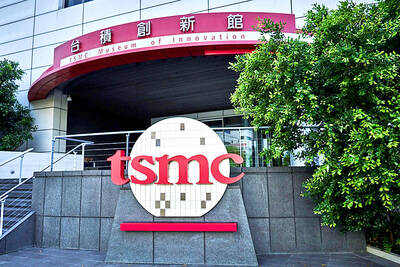The suicide of a young trader who thought he lost hundreds of thousands of US dollars on Robinhood.com has intensified scrutiny of the online platform popular with young people new to investing.
Alexander Kearns took his life on June 12 after his Robinhood account showed a negative balance of US$730,000 based on options trades.
“The emotional stress from the exposure caused him to take his own life,” tweeted Bill Brewster, a cousin of the 20-year-old Kearns and a financial analyst based in Chicago.
Kearns’ family believes Robinhood Markets Inc did a poor job of explaining and accounting for complex financial trades, leading him to misinterpret the figures.
They think his account actually had a positive balance.
Robinhood declined to comment directly on Kearns’ account, but a source familiar with Robinhood’s procedures on Thursday said that during options trading, an account with a positive portfolio can show a negative cash position.
‘DEVASTATED’
In a blog post on Friday last week, Robinhood cofounders Vlad Tenev and Baiju Bhatt said they were “personally devastated” and promised to revise requirements for investing in options, bolster the platform’s educational resources and improve the user interface.
Tenev and Bhatt also announced a US$250,000 donation to the American Foundation for Suicide Prevention.
Robinhood was launched in 2013 with the stated goal of democratizing access to Wall Street trading and eliminating commissions on trades of stocks, options and exchange-traded funds.
The platform also permits traders to buy fractions of shares of more expensive companies and grants free stock to new customers.
The company is among fintech upstarts remaking finance with smartphone-oriented technology. Robinhood raised US$280 million in fresh capital last month.
Users are humored by features like an explosion of virtual confetti after each transaction and can keep lists of favored stocks to follow.
Early last month, Robinhood reported 13 million accounts on the platform following a surge in new clients as a result of COVID-19 lockdowns.
That was a much bigger increase in new customers compared with Charles Schwab Corp, TD Ameritrade Holding Corp and E-Trade Financial Corp, even if the older firms had accounts with much higher values.
Many of Robinhood’s new users are day traders attracted to penny stocks — a category shunned by big-time investors.
A number of the fledgling traders have actually done well this year, according to an analysis by Societe Generale SA of trades since the beginning of the year.
“Their timing back into the market looks impeccable with a significant pickup in holdings as equity markets bottomed in mid-March,” the French bank said in a note.
However, there were questions about Robinhood even before the Kearns tragedy. The platform’s revenues are based on subscriptions to its premium service, as well as payments from market makers for routing their orders.
The latter is often a source of compensation for brokerages, but it is controversial because of its opacity — seemingly contradicting Robinhood’s commitment to transparency.
The platform is vulnerable to technology outages and has also had some stumbles as it introduced new products such as a high-yield savings account.
However, the biggest criticism has been the lack of protections for retail investors.
‘TOO EASY’
“Robinhood makes it far too easy for young, inexperienced, low-account balance investors to get into risky investing behaviors that they are neither educated enough nor experienced enough to engage in,” said Tara Falcone, a certified financial planner and founder of ReisUp, a financial literacy service.
Robinhood permitted investments in cryptocurrencies, such as bitcoin, without warning of the risks involved, Falcone said, and though the company’s statements since Kearns’ suicide suggest progress, it needs to go much further.
“Democratizing access to investing is a wonderful mission and they’ve clearly done a tremendous job in doing so,” she said.
“But with that type of freedom comes a lot of responsibility. Some of that is on the shoulders of the individuals engaging in these acts, but I also believe that Robinhood has a responsibility to their stakeholders,” she added.

SEEKING CLARITY: Washington should not adopt measures that create uncertainties for ‘existing semiconductor investments,’ TSMC said referring to its US$165 billion in the US Taiwan Semiconductor Manufacturing Co (TSMC, 台積電) told the US that any future tariffs on Taiwanese semiconductors could reduce demand for chips and derail its pledge to increase its investment in Arizona. “New import restrictions could jeopardize current US leadership in the competitive technology industry and create uncertainties for many committed semiconductor capital projects in the US, including TSMC Arizona’s significant investment plan in Phoenix,” the chipmaker wrote in a letter to the US Department of Commerce. TSMC issued the warning in response to a solicitation for comments by the department on a possible tariff on semiconductor imports by US President Donald Trump’s

‘FAILED EXPORT CONTROLS’: Jensen Huang said that Washington should maximize the speed of AI diffusion, because not doing so would give competitors an advantage Nvidia Corp cofounder and chief executive officer Jensen Huang (黃仁勳) yesterday criticized the US government’s restrictions on exports of artificial intelligence (AI) chips to China, saying that the policy was a failure and would only spur China to accelerate AI development. The export controls gave China the spirit, motivation and government support to accelerate AI development, Huang told reporters at the Computex trade show in Taipei. The competition in China is already intense, given its strong software capabilities, extensive technology ecosystems and work efficiency, he said. “All in all, the export controls were a failure. The facts would suggest it,” he said. “The US

The government has launched a three-pronged strategy to attract local and international talent, aiming to position Taiwan as a new global hub following Nvidia Corp’s announcement that it has chosen Taipei as the site of its Taiwan headquarters. Nvidia cofounder and CEO Jensen Huang (黃仁勳) on Monday last week announced during his keynote speech at the Computex trade show in Taipei that the Nvidia Constellation, the company’s planned Taiwan headquarters, would be located in the Beitou-Shilin Technology Park (北投士林科技園區) in Taipei. Huang’s decision to establish a base in Taiwan is “primarily due to Taiwan’s talent pool and its strength in the semiconductor

French President Emmanuel Macron has expressed gratitude to Hon Hai Precision Industry Co (鴻海精密) for its plan to invest approximately 250 million euros (US$278 million) in a joint venture in France focused on the semiconductor and space industries. On his official X account on Tuesday, Macron thanked Hon Hai, also known globally as Foxconn Technology Group (富士康科技集團), for its investment projects announced at Choose France, a flagship economic summit held on Monday to attract foreign investment. In the post, Macron included a GIF displaying the national flag of the Republic of China (Taiwan), as he did for other foreign investors, including China-based